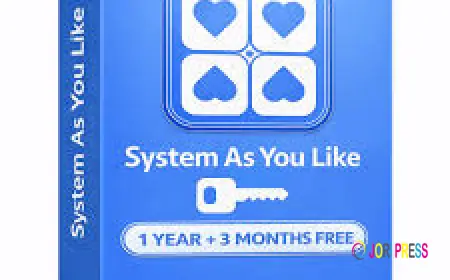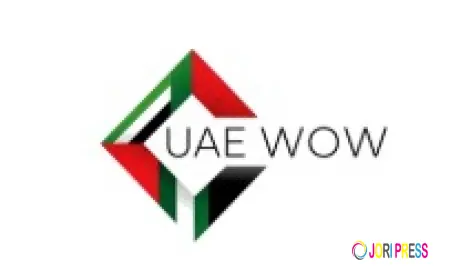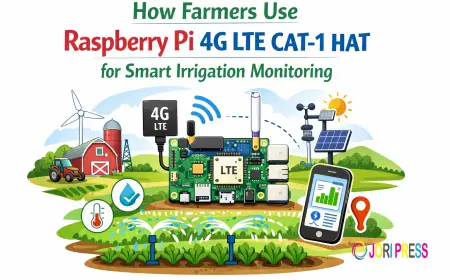Egypt Internet of Things Market 2030 Size Insights, Top Competitors, and Sector Outlook
According to the recent TechSci Research report, “Egypt Internet of Things Market – By Region, Forecast & Opportunities, 2030F,” the market was valued at USD 500.15 million in 2024 and is projected to surge to USD 1,583.03 million by 2030, achieving a robust CAGR of 20.99%. Behind this exponential growth are the convergence of IoT with AI, evolving urban landscapes, and an emerging culture of digital-first consumers.
Request For Sample Copy of Report For More Detailed Market insight: https://www.techsciresearch.com/sample-report.aspx?cid=7779#requestform
Industry Key Highlights
-
2024 Market Valuation: USD 500.15 million
-
2030 Market Projection: USD 1,583.03 million
-
Compound Annual Growth Rate (CAGR): 20.99%
-
Fastest-Growing Component Segment: Services (consulting, integration, managed)
-
Leading Region: Alexandria (accelerating ahead of Greater Cairo)
-
Core Technology Trends: AI integration, smart infrastructure, edge analytics
-
High-Impact Verticals: Manufacturing, utilities, agriculture, healthcare, consumer devices, smart cities
-
Key Enablers: Expansion of 5G, fiber infrastructure, supportive government digital initiatives
Browse over XX market data Figures spread through XX Pages and an in-depth TOC on the " Egypt Internet of Things Market"@https://www.techsciresearch.com/report/egypt-iot-market/7779.html
The IoT Renaissance in Egypt
Egypt has historically embraced incremental modernization—but the recent surge in IoT adoption marks a qualitative shift. This new era is differentiated not just by device connection but by intelligent systems that analyze, predict, and respond autonomously. Driving this shift are:
-
Integrated AI–IoT Fusion: IoT platforms infused with AI and Big Data are generating actionable insights from raw sensor data. For instance:
-
In manufacturing, vibration and temperature sensors, powered by AI at the edge, alert teams to impending equipment failures.
-
Smart utilities employ IoT-enabled metering combined with ML analytics to predict energy demand and optimize load balancing.
-
-
Consumer Adoption & Lifestyle Transformation: The Egyptian middle class is rapidly embracing consumer IoT devices such as smart lighting, voice assistants, fitness wearables, and e-health platforms. This shift is fueling:
-
Smart Homes: Integration in mid-tier developments and apartments, making automation commonplace.
-
Wearables: Smartwatches and fitness trackers are resonating with urban youth, accelerating local consumer IoT markets.
-
-
Industrial & Infrastructure Transformation: Rather than merely connecting devices, Egyptian manufacturers are using connected sensors for predictive maintenance, reducing unplanned downtime by as much as 20–30%. Meanwhile, logistics and port operations in locales like Alexandria are enhancing efficiency through IP-tracking and intelligent routing.
-
Public Sector & Smart Cities: Alexandria is at the forefront. Fiber-optic expansion, public safety analytics, automated traffic control, and smart utility meters are all pillars of the city's digital initiatives, synchronizing services with citizen needs.
Emerging Trends
1. AI-Powered Edge and Cloud Intelligence
IoT devices on their own are no longer enough. The AI integration—with embedded ML models running at the edge or in hybrid cloud systems—enables:
-
Predictive Maintenance in factories using real-time vibration analytics
-
Smart Grids that forecast energy load efficiently
-
Agricultural Optimization via soil-moisture and weather analytics
-
In-Store Intelligence in retail with consumer movement tracking
2. Service-Led IoT Deployments
The complexity of IoT integration is driving demand for services more than hardware. Businesses and governments are investing heavily in:
-
Consulting and Feasibility Planning: “What IoT strategy suits our need?”
-
System Integration: Connecting sensors, cloud platforms, analytics tools
-
Managed Services: Remote monitoring, updates, performance tracking
-
Device Lifecycle Management: Firmware upgrades, plug-and-play provision
This component has emerged as the fastest-growing part of the IoT market.
3. Consumer IoT Expansion
Smart living is no longer aspirational — it’s practical and affordable.
-
Urban homes are adopting automated lighting, thermostats, voice platforms, and intelligent security systems as standard.
-
Rising local brands are offering budget-friendly gadgets, bridging demand among price-conscious consumers.
-
Health-tech wearables and voice-activated lifestyle apps are seeing market penetration rise alongside smartphone expansion.
4. Edge Computing for Real-Time Insights
From smart ports to traffic systems, edge nodes in Alexandria are processing millions of data points. This shift defers latency and improves decision-making speed across sectors.
5. Regional Load Building
Alexandria is outperforming classical tech hubs. Its blend of infrastructure, R&D institutions, startup incubators, and pilot programs in smart ports and waste management create fertile IoT ecosystems.
Core Drivers
A. Digital Infrastructure Deployment
Government investment in fiber connectivity and early 5G coverage, especially in non-metro areas, enables practical IoT feasibility at scale.
B. Industrial Automation Imperative
Egypt's manufacturing sector yearns for increased uptime and global competitiveness. IoT is chosen as the enabler of predictive maintenance and robotics.
C. Urbanization & Smart City Planning
Pilot IoT programs—from street lighting to waste management—are integrated into policy-making, nudging connected solutions into mainstream civic services.
D. Consumer Lifestyle Shifts
Increasing smartphone adoption, online shopping, and openness to e-health mean consumers are ready to adopt IoT into their daily routines.
E. Cross-Sectoral Integration
IoT solutions designed for logistics, agriculture, retail, and environmental monitoring demonstrate multipurpose benefits, creating new business models and ecosystem partnerships.
Competitive Analysis
Prominent Solution Providers in Egypt
-
Siemens: Industrial IoT leader, offering factory automation and energy management
-
Amazon: Marketplace access to AWS IoT, analytics, edge services
-
IBM: Hybrid cloud and Watson-driven IoT services
-
Cisco: Networking backbone and secure device connectivity
-
Microsoft: Azure IoT Hub, edge compute, AI integration, developer support
-
Oracle: Database-integrated IoT for enterprise management
-
Honeywell: Industry solutions in HVAC, buildings, process control
-
HPE: On-prem edge solutions, IoT server infrastructure
-
Ericsson: Telecom-edge networks, 5G-based IoT connectivity
-
Huawei: Device, connectivity, and smart city platforms
Strategic Positioning
-
Global-heavyweights (IBM, Microsoft, AWS) offer scalable platforms, AI libraries, and global ecosystems, appealing to large enterprises and government entities.
-
System integrators (Siemens, Cisco, Honeywell) focus on vertical-specific solutions—factories, ports, utilities—leveraging deep domain expertise.
-
Telecom-focus (Ericsson, Huawei) provide connectivity, edge infrastructure, and 5G IoT services, broadening smart city and industrial uptake.
-
Enterprise data-centric (Oracle, HPE) deliver integrated device-to-database solutions often preferred in regulated industries.
10 Benefits of the Research Report
This comprehensive study offers the following advantages for decision-makers:
-
Strategic Market Insights – Detailed forecast and segmentation to guide entry, expansion, or investment decisions.
-
Component Analysis – Understand hardware, software, and services growth; use-case specific insights.
-
Vertically Aligned Guidance – Focused coverage on manufacturing, utilities, agriculture, retail, healthcare, and smart city applications.
-
Regional Intelligence – Deep dive into Alexandria’s lead; projection across other governorates.
-
Competitive Landscape Mapping – Table of major providers with strengths, use-case expertise, and tech focus.
-
Emerging Trend Quantification – AI/edge/consumer IoT trends mapped to anticipated ROI.
-
Policy & Infrastructure Readiness – Perspective on broadband expansion, 5G rollout, and digital strategy alignment.
-
Services as Growth Engine – Unique focus on managed and integration services—the fastest-growing IoT segment.
-
Actionable Recommendations – Step-by-step roadmap for providers, OEMs, SMEs, and government players.
-
Customization Options – Clients can request 10% of the report to be tailored for sector-specific or regional deep dives.
Future Outlook – Powered by Intelligence (2030 Vision)
1. AI-becomes-Table-Stake
By 2030, all major IoT systems in Egypt will integrate ML for real-time, autonomous decision-making—from smart grid optimization to retail stock replenishment.
2. Smart Cities Enter Maturity Phase
Beyond streetlights, smart ports and water usage monitoring, IoT will chart public safety, citizen engagement, and municipal services at scale in Alexandria, Cairo, Mansoura, and beyond.
3. Consumer-IoT Mainstreaming
Affordable smart home packages and health wearables will find adoption in suburban homes, impacting non-metro real estate offerings and service-provider bundles.
4. Edge-Cloud Coexistence
A mix of edge processing and cloud analytics will solve modern needs—local intelligence, low latency, global synchronization. Telecom operators will capitalize by deploying rural-edge nodes.
5. Services Lead Market Share Growth
Consulting, integration, managed deployments, and post-sales analytics will outpace hardware growth as IoT transforms into full-stack, ongoing ecosystems.
6. Regional Ecosystem Replication
Success in Alexandria will ripple to other governorates. New IoT zones—build around digital clusters, academic centers, and logistic facilities—will emerge.
7. Cross-Industry Interoperability
IoT systems will overlap functions across sectors—smart manufacturing also connects to smart grids, logistics platforms share with retail systems, enabling systemic benefits.
Strategic Recommendations
To leverage this rapid momentum, stakeholders should consider:
-
Invest in AI-readiness – Onboard edge compute solutions and AI engines early in deployment cycles, even in pilot stages.
-
Establish System Integration Hubs – Build in-house or partner with integrators for vertical-specific IoT deployment competency.
-
Offer Bundled Consumer Packages – Entry-level smart home products packaged with telecom subscriptions or real estate offerings.
-
Build Edge Compute Facilities – Partner with telcos for localized IoT/data processing for industrial clients.
-
Enable Scalability through Services – Create R&D centers, integration services, and continuous support offerings as key revenue streams.
-
Leverage Public Pilots as Case Studies – Showcase projects in Alexandria smart-tech—lighting, ports, traffic—as replicable blueprints.
-
Champion Data Governance – Secure data transmission and IoT cybersecurity as a trust differentiator.
Customers can also request for 10% free customization on this report.
Conclusion
Egypt’s IoT journey is not incremental—it is exponential. In less than a decade, the country is transforming digitally, with IoT at its heart. Driven by AI, edge intelligence, smart urbanization, and informed citizens, the market is poised to cross USD 1.58 billion by 2030, riding a 21% CAGR. The convergence of consumers, public infrastructure, and industrial use-cases sets Egypt apart as a regional IoT pioneer.
For businesses, investors, government agencies, and innovators, this is a moment to act. By forging alliances, prioritizing services, and scaling smart deployments, Egypt can leap ahead—building smarter cities, efficient industries, and connected societies. The future of IoT here is intelligent, strategic, and brimming with potential.
Contact US:
Techsci Research LLC
420 Lexington Avenue, Suite 300,
New York, United States- 10170
Tel: +13322586602
What's Your Reaction?
 Like
0
Like
0
 Dislike
0
Dislike
0
 Love
0
Love
0
 Funny
0
Funny
0
 Angry
0
Angry
0
 Sad
0
Sad
0
 Wow
0
Wow
0



















































